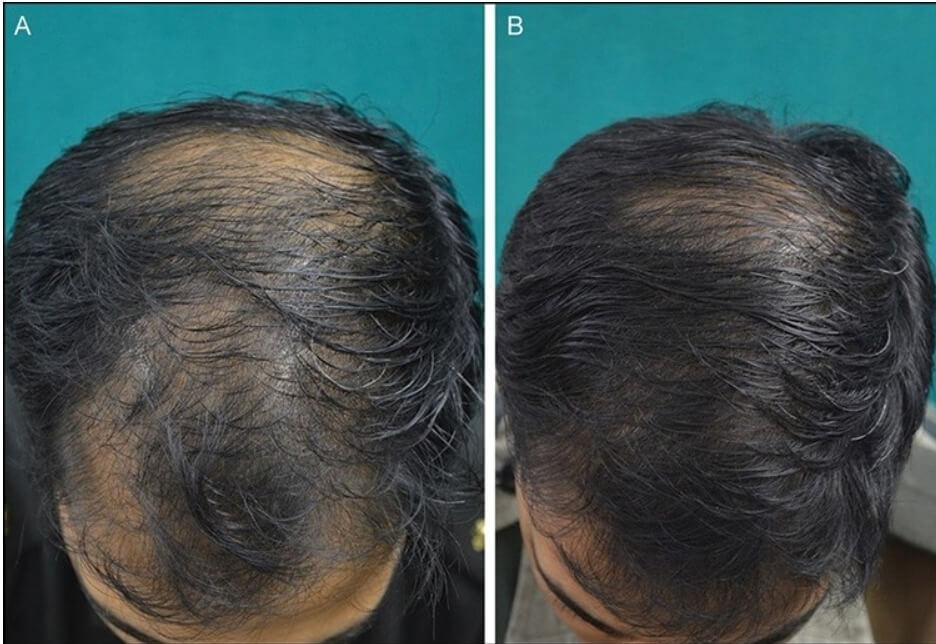The medical term used to describe hair loss is called alopecia. The term alopecia therefore does not refer to any specific condition.
 Hair loss or alopecia is further subdivided into those that are scarring or non-scarring types. In scarring alopecia, there is permanent damage to hair follicles with the result that those hairs will never grow back. These conditions need to be identified early to prevent any further hair loss. On the other hand, non-scarring alopecia is potentially reversible but treatment is required to reverse the process that is causing the hair loss. All types of alopecia may affect men, women or even children.
Hair loss or alopecia is further subdivided into those that are scarring or non-scarring types. In scarring alopecia, there is permanent damage to hair follicles with the result that those hairs will never grow back. These conditions need to be identified early to prevent any further hair loss. On the other hand, non-scarring alopecia is potentially reversible but treatment is required to reverse the process that is causing the hair loss. All types of alopecia may affect men, women or even children.
Non- scarring alopecia
The commonest type of non-scarring hair loss is androgenetic alopecia. Because of the differences in presentation in men and women, in men is it called male pattern hair loss and in women, female pattern hair loss. In females it may present simply as thinning hair rather than actual balding. In men, this condition is often inherited and may even start as early as in the 20’s, but in females there may be other underlying causes that contribute.
 Treatment is available for both sexes. In children, the commonest cause of non-scarring hair loss is a fungal infection called Tinea capitis. This needs to be identified early as some cases may result in scarring to the hair follicles. Tinea capitis is uncommon in adults.
Treatment is available for both sexes. In children, the commonest cause of non-scarring hair loss is a fungal infection called Tinea capitis. This needs to be identified early as some cases may result in scarring to the hair follicles. Tinea capitis is uncommon in adults.
Alopecia areata is another type of non-scarring hair loss that often starts as patchy areas of baldness, but may progress to involve the entire scalp or body hair if not treated early. Telogen effluvium is a type of hair loss that results in excessive shedding of hair and is often seen as hair falling out in bunches from the roots. Sufferers often identify this condition when they find excessive hair on pillows and when hair clogs shower drains. This hair disorder can be diagnosed with a simple test. This type of hair loss needs to be investigated for a potential underlying cause.
Scarring alopecia
This type is considered a “trichological emergency” as delaying treatment will result in permanent hair loss. There are various types of scarring hair loss. Some are primary conditions of hair follicles like folliculitis decalvans and lichen plano-pilaris. Conditions like acne keloidalis nuchae and central centrifugal cicatricial alopecia (CCCA) occur more commonly in African race groups. Other type of scarring hair loss may be due to an underlying skin or internal problem e.g. Discoid lupus erythematosis or even some rare types of cancers like follicular mucinosis. Although the hair loss from these conditions is often irreversible, it is important to identify these early so as to prevent any further progression.
It is important to have these conditions assessed early as we can perform the necessary investigations to identify the exact condition so that treatment specific can be instituted early.
Platelet rich plasma (PRP) for hair loss
Anyone experiencing hair loss is essentially a good candidate for PRP treatments, but those with early hair loss tend to respond best.
PRP is best used for patients with androgenic alopecia, which is a genetically determined type of hair thinning that typically occurs along the top of the head. In women, this might look like a widening part with normal hair thickness at the back of the head.
The results
For best results, consistency is key. Treatments are typically performed once a month for the first three to four months, and then every three to six months thereafter, depending on the individual patient's response and results. Following this protocol, anticipated results can first be seen within two to three months
The first result that patients usually note is decreased hair shedding, followed by early regrowth and increased length of hair.
The general consensus is that receiving treatments every three to six months on a long-term basis are optimal for continuing to stimulate the growth factors and stem cells that are associated with regrowth and stopping hair fallout
It's important to keep in mind that PRP can, and should, be a part of a multifaceted program to treat hair thinning and loss. Your dermatologist may prescribe you spironolactone or finasteride to help promote hair regrowth Topical treatments, like minoxidil may be needed
Click here for more info on PRP



